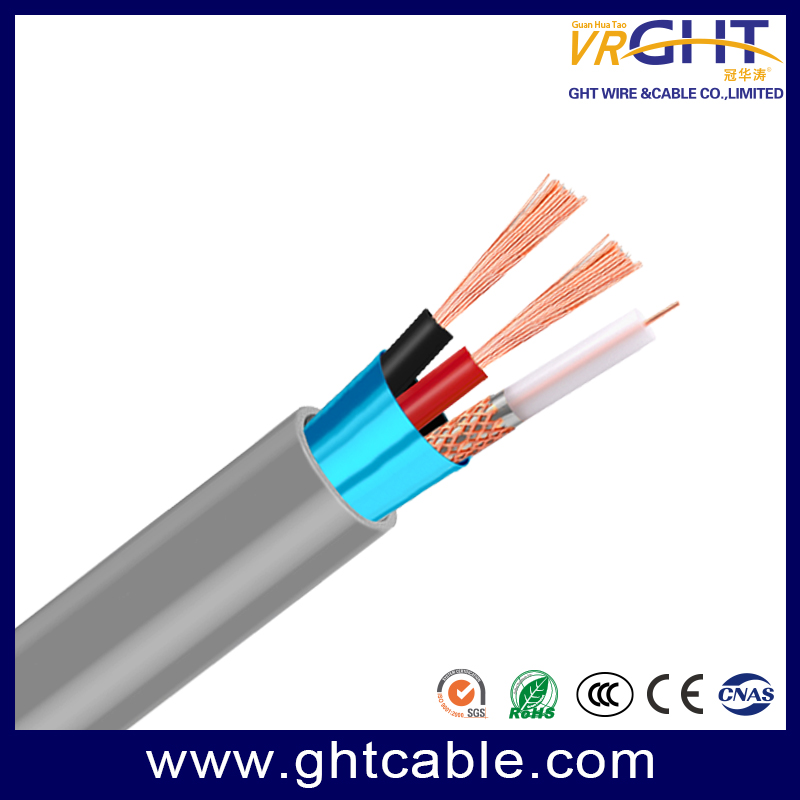
Top 10 Uses for Coaxial Cable in 2025
Coaxial cable, often simply called “coax,” continues to be a backbone of modern connectivity, even as fiber optics and wireless technologies rapidly advance. Its unique structure—featuring a central conductor, insulating layer, metallic shield, and protective outer jacket—offers excellent shielding against electromagnetic interference and ensures reliable signal transmission. In 2025, coaxial cable remains indispensable across a wide range of applications, from home entertainment to industrial automation. Below is an in-depth look at the top 10 uses for coaxial cable in 2025, along with a recommendation for VRGHT, a trusted supplier in the field.
1. Cable Television (CATV) and Satellite TV
Coaxial cable is the standard for delivering cable and satellite television signals to millions of homes and businesses. Its ability to transmit high-frequency signals over long distances with minimal loss makes it ideal for high-definition and ultra-high-definition (4K, 8K) content. Even as streaming grows in popularity, many regions and buildings still rely on coaxial infrastructure for reliable, high-quality TV service.
2. High-Speed Internet Connectivity
Despite the rise of fiber optics, coaxial cable remains crucial for broadband internet, especially in hybrid fiber-coaxial (HFC) networks. These networks use fiber for long-haul transmission and coaxial cable for the “last mile” to homes and offices. With support for DOCSIS 4.0 and beyond, coaxial cable can deliver gigabit-level speeds, making it a practical and cost-effective choice for both urban and suburban connectivity.
3. CCTV and Security Systems
Security is a top priority in today's world, and coaxial cable is a trusted solution for transmitting video signals in closed-circuit television (CCTV) and security systems. Its robust shielding ensures clear, interference-free video feeds, which is essential for monitoring and recording in both residential and commercial environments. Coaxial cable is also favored for its durability and ease of installation in new and existing buildings.
4. Professional Audio and Video Transmission
In professional settings—such as broadcast studios, live event venues, and home theaters—coaxial cable is the preferred medium for transmitting high-quality digital audio and video signals. Its ability to minimize interference and maintain signal integrity over long distances is critical for connecting amplifiers, speakers, AV receivers, and video switchers.
5. Home Networking (MoCA Technology)
The Multimedia over Coax Alliance (MoCA) technology has transformed coaxial cable into a powerful tool for home networking. MoCA adapters use existing coaxial wiring to create high-speed, low-latency networks that connect routers, computers, gaming consoles, and smart TVs. This approach is especially valuable in homes where running new Ethernet cables is impractical, offering a seamless, cost-effective upgrade to whole-home connectivity.
6. Wireless Communication Infrastructure
Coaxial cable is essential in wireless communication systems, where it connects antennas, cellular repeaters, and base stations. Its shielding and low signal loss are crucial for maintaining reliable connections in 5G networks, Wi-Fi systems, and IoT deployments. In dense urban environments and remote locations alike, coaxial cable ensures that wireless signals remain strong and consistent.
7. Smart Home Device Integration
As smart home technology becomes more sophisticated, coaxial cable plays a key role in connecting and integrating devices such as smart TVs, security cameras, and home automation hubs. Its reliability and ability to handle high data rates support seamless communication between components, ensuring that smart home systems operate smoothly and efficiently.
8. Broadcasting and HDTV Transmission
Coaxial cable is the standard for transmitting high-definition television (HDTV) signals in professional broadcasting environments. Whether used in television studios, live event broadcasts, or stadiums, coaxial cable delivers uncompressed, high-quality video over long distances without degradation. Its robustness and flexibility make it a staple for both permanent installations and temporary event setups.
9. Telecommunications and Data Centers
Telecommunications networks and data centers rely on coaxial cable for voice and data transmission, especially where high-frequency signals and long-distance runs are required. Its durability, ease of installation, and ability to handle large bandwidths make it suitable for backbone infrastructure, server rooms, and interconnects between network equipment.
10. Industrial and Specialized Applications
In industrial automation, aerospace, automotive, and healthcare, coaxial cable is valued for its resilience and ability to perform in harsh environments. It is used to transmit control signals, sensor data, and high-frequency communications in factories, vehicles, and medical devices. Its robust construction ensures consistent performance where reliability and safety are paramount.
Why Coaxial Cable Remains Essential in 2025
The continued relevance of coaxial cable is driven by several key factors. Its durability allows it to withstand physical stress, temperature extremes, and moisture, making it suitable for indoor and outdoor use. The coaxial design provides low signal loss and strong resistance to electromagnetic interference, ensuring high-quality transmission even in electrically noisy environments. Versatility is another advantage, as coaxial cable supports a wide range of applications, from entertainment and networking to security and industrial control. Finally, its cost-effectiveness makes it an attractive option for upgrading or extending existing infrastructure without the high costs associated with newer technologies.
About VRGHT – Your Reliable Coaxial Cable Partner
When it comes to sourcing high-quality coaxial cables and network solutions, VRGHT stands out as a leader in the industry. Since 2006, VRGHT has specialized in manufacturing network cables, coaxial cables, CCTV cables, power cables, HDMI, VGA, DVI, and USB products. The company's commitment to quality is reflected in its ISO 9001, VDE, and CE certifications, as well as compliance with RoHS, REACH, and FLUKE standards.
VRGHT's products are trusted in major projects worldwide, including buildings, airports, and power networks across Africa, Australia, America, Europe, and Asia. The company offers OEM/ODM services and is dedicated to innovation, always staying ahead of market trends and customer needs. With professional pre-sale, sale, and after-sales support, VRGHT ensures a seamless experience for every client, making it the go-to partner for reliable, high-performance coaxial cable solutions.
Conclusion
In 2025, coaxial cable continues to be a foundational technology, enabling critical applications in entertainment, internet access, security, broadcasting, telecommunications, and industry. Its unmatched combination of durability, performance, and versatility ensures that it remains a preferred choice for both legacy and cutting-edge systems. For anyone seeking dependable connectivity solutions, partnering with a reputable supplier like VRGHT guarantees access to top-tier products and expert support. As technology continues to advance, coaxial cable's proven reliability and adaptability will keep it at the heart of global communication networks for years to come.










Leave a comment